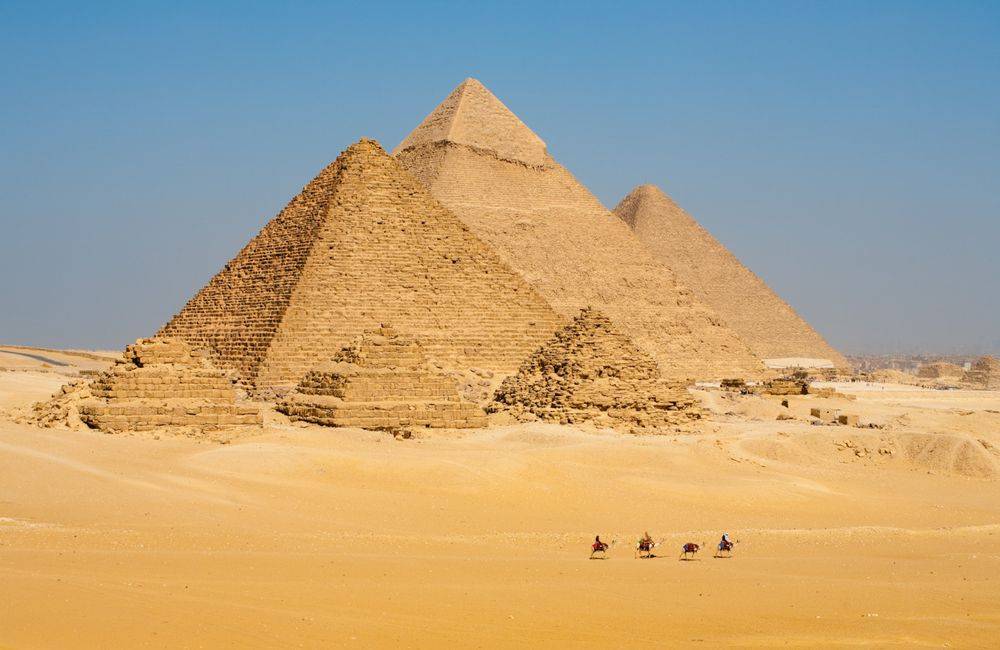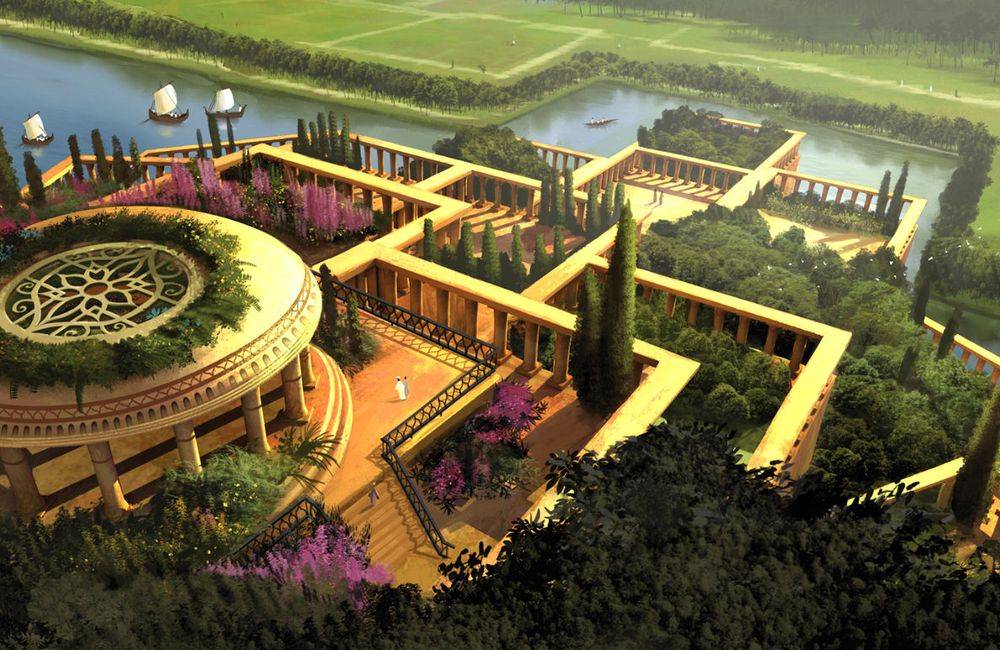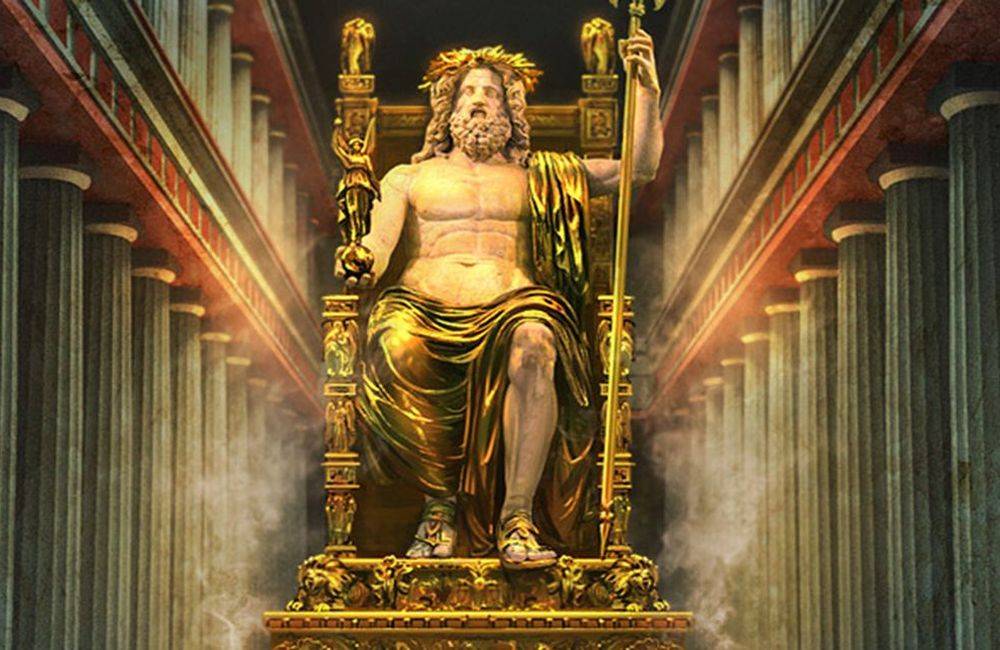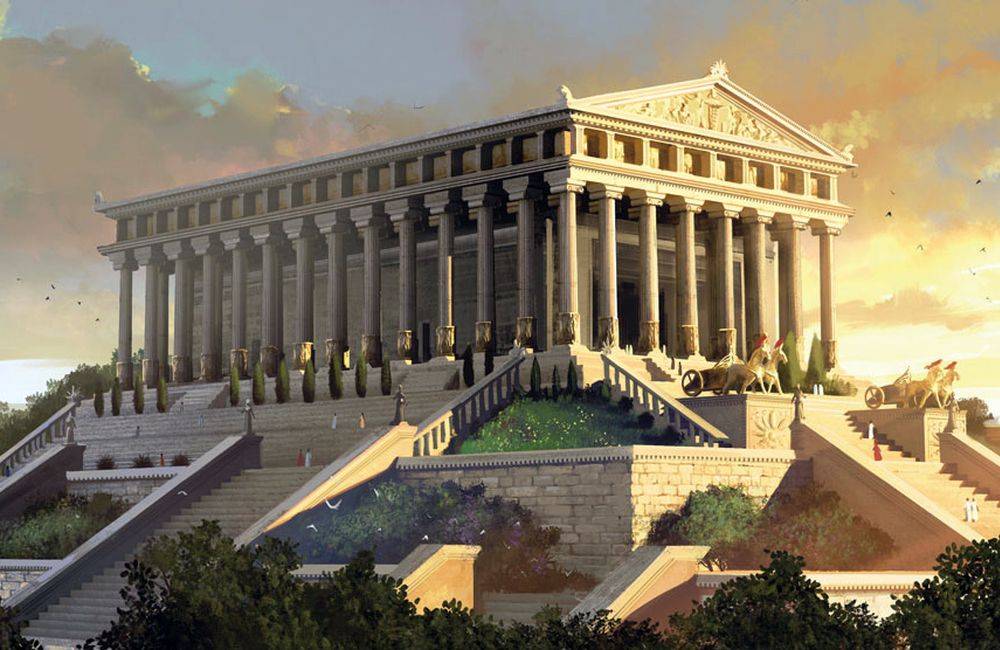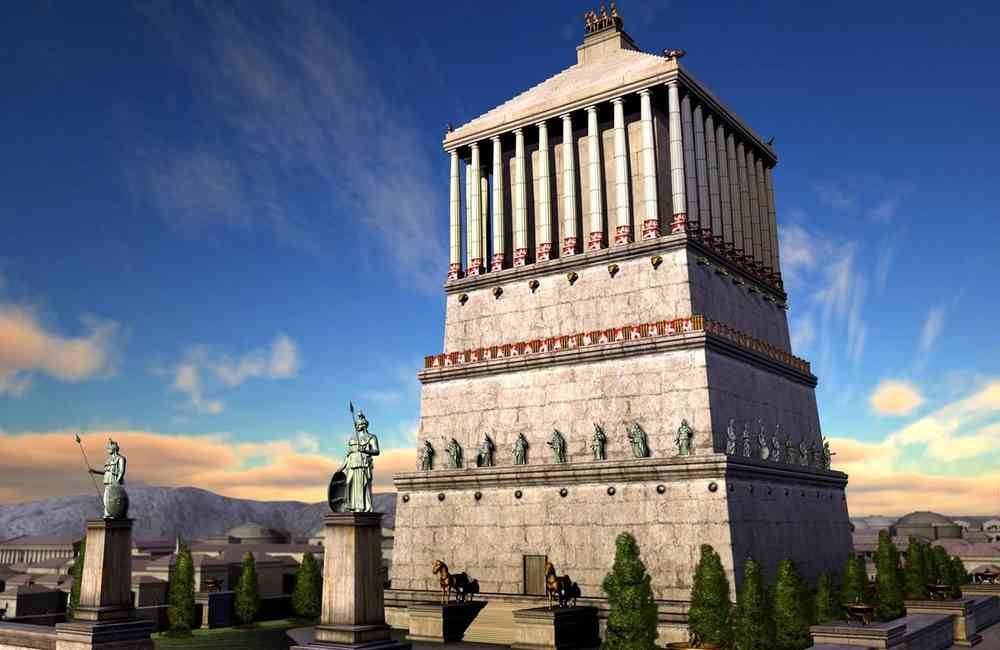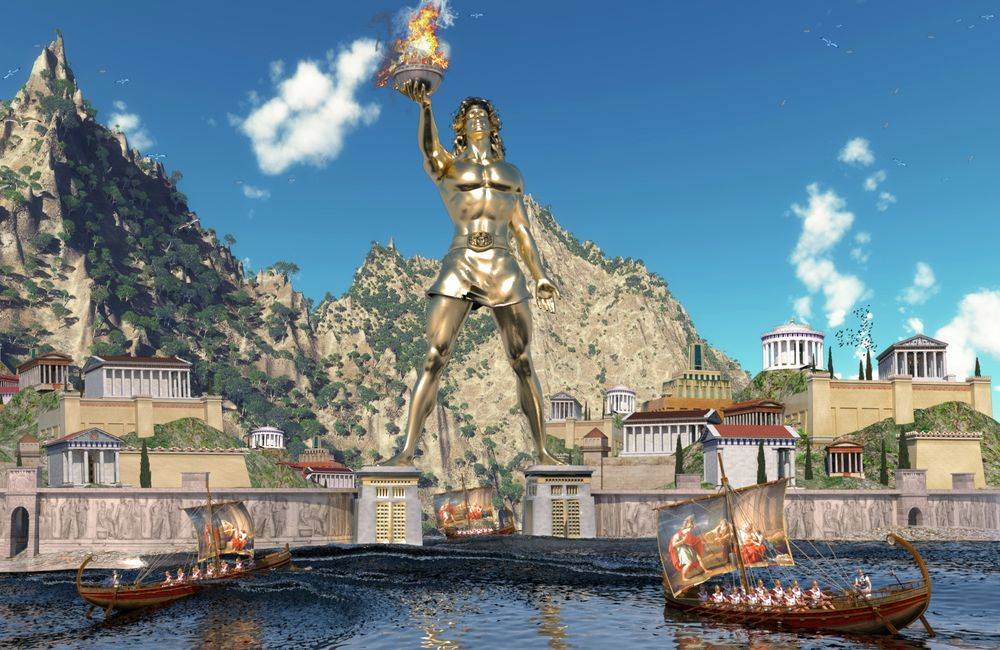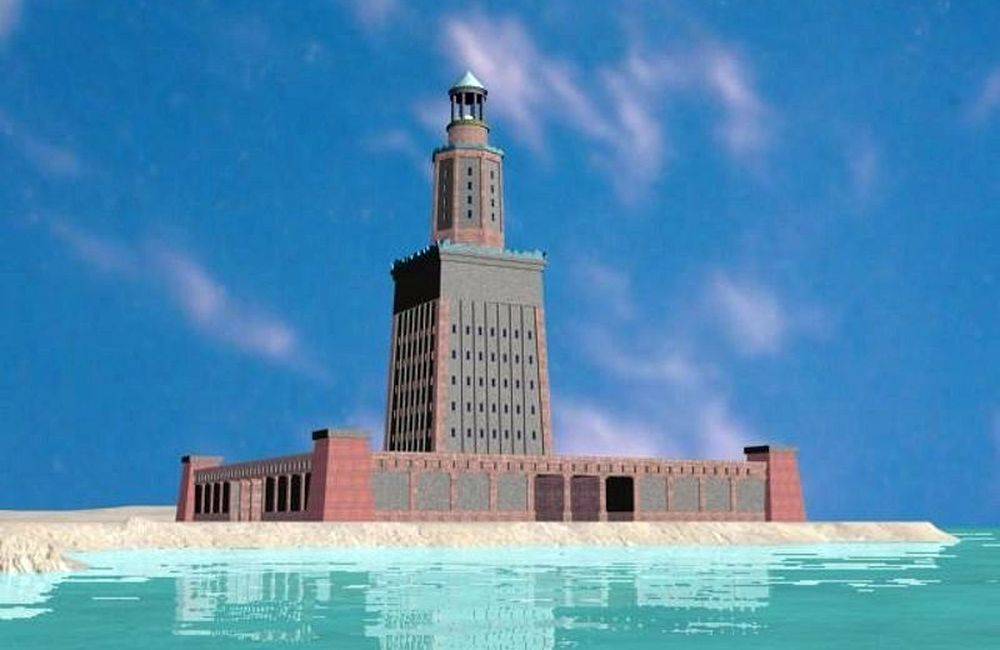The 7 Wonders of the World are a list of ancient monuments built between the 3rd millennium BC for the oldest and the 3rd century BC for the most recent. They have the characteristics of having marked their eras, giving glory to the civilizations that erected them. Here is the list.
Listen to the program "La curiosité est un vilan défaut" on 27/02/2017 (in french), a program broadcast on RTL and presented by Sidonie Bonnec and Thomas Hugues. They received Olivier Lemaître, editor-in-chief of the magazine Historia, who explains in a playful and very clear way what these seven wonders of the World were.
A good moment!
Where were the 7 wonders of the ancient world?
They are all in a geographical area ranging from Mediterranean Europe to Asia Minor. Five of them are in an area of influence of the ancient Greek empire, two in that of ancient Egypt and the last is in the ancient city of Babylon, now approximately 50 km south of Baghdad, in Iraq. Only one of these seven wonders is still standing today, the pyramid of Cheops, The statue of Zeus, the colossus of Rhodes and the hanging gardens of Babylon have no trace today, so much so that the existence of gardens is debatable and discussed. On the other hand, the lighthouse of Alexandria, the temple of Artemis and the mausoleum of Halicarnassus all have vestiges visible today, so we know perfectly where they were and what were their environments of the time.
Learn more about the location of the 7 wonders.
Maartens van Heelkerck
Maartens van Heelkerck was a Dutch historical painting of the sixteenth century. He is known for making engravings of a series called "The 7 Wonders of the World". If these works are artistically interesting, they are much less from a documentary point of view but still deserve a glance.
Learn more about Maartens van Heelkerck.
The pyramid of Cheops
The term "Wonder" was applied to the great pyramid of Kheops for the first time by Herodotus, in the 5th century BC. Other celebrities of antiquity will also do so, like Diodorus of Sicily, then Strabon (1st century BC), and Pliny the Elder (1st century BC).
Always accompanied by those of Kephren, Mykérinos and those of the three queens, the Pyramid of Kheops is the highest in the world. It was built in the seventeenth century BC on the Giza plateau near the ancient capital of the Empire, Memphis, west of Egypt's present capital, Cairo. The pyramid of Cheops, like those of its immediate successors Kephren and Mykerinos, is the only one of the seven wonders of the ancient world still visible today, the others having either been completely destroyed or, state of ruins.
If one ignores the details of the construction, it seems that it took twenty years to build it, with the help of thousands of workers. It required 2 300 000 blocks of white granite and limestone (which were used for its coating), each block weighing between 2.5 and 15 tons. The way in which these blocks were hoisted over each other gave rise to many assumptions, given the technical means of the time. The most plausible is that of stacking the blocks with a helical ramp of raw brick, a ramp that was later destroyed. This thesis, held by the Egyptologist Georges Goyon, is one of those that hold the most road today.
Its dimensions are quite simple, it is based on a square plan of 230m of side, which makes almost 1 Km of perimeter. These four sides are oriented towards the cardinal points. The angle of elevation is 51 ° with respect to the ground, which goes up to 146m of height. Currently, it is only 136m because it is truncated.
Its role was to serve as the tomb of the Pharaoh, just like the other pyramids of the area. There are other assumptions about the usefulness of the pyramid, if they can sometimes have a scientific background, most are highly fanciful.
Learn more about the Pyramid of Cheops.
The hanging gardens of Babylon
The history of the city of Babylon begins in the second half of the third millennium BC, relatively early in the history of mankind. The city is going to be the center of an Empire that will spread throughout the second millennium and then expand to the top of the empire during the reign of Nebuchadnezzar (605-562 BC). The city was then covered of various splendours, for example the famous gate of Ishtar, one of the 100 gates of the city:
I put it in bricks enamelled in blue on which were represented wild bulls and dragons. I had it placed above it to cover it with cedar beams. I placed in its gates copper-covered wings, hinges and bronze supports. I embellished this door in order to make the admiration of all the people.
Many other buildings, including the summer palace and a gigantic bridge spanning the Euphrates, embellished the city. And of course, in this context, the gardens were seen as havens of happiness, to possess it meant the wealth of its owner. The most important were made for the bride of Nebuchadnezzar, Amytis, daughter of the king of the Medes. If their very existence is sometimes subject to discussion, the traces that we have of them through various testimonies, rarely direct, indicate that it would be a terrace at 20m high trapezoidal shape whose long side measured 120m . They were irrigated by canals coming from the Euphrates and whose water was mounted on the terrace by a system of worms. The composition of these gardens is unknown at this time.
At the end of the 19th century archaeologists found traces of what might be the hanging gardens of which Herodotus, Diodorus of Sicily, Stabon - who described the Lighthouse of Alexandria - and Quintus Curce speak, but these remains are truly subject to caution.
Learn more about the hanging gardens of Babylon.
the statue of Zeus
Do you know what a chryselphantine statue is? Well, it is simply a statue of gold and ivory, like this statue of Zeus, built by Phidias, around 430 BC. It was in the temple of Zeus in Olympia, a temple that was built on the remains of another temple dedicated to Hera, towards the end of the 6th century BC. In honor of Zeus of the Sports Games were organized, but gradually the games gained momentum and it was necessary to build a temple to the glory of Zeus himself, which was done between 470 and 456 BC.
This temple was destroyed by an earthquake, the stones recovered and reused. At the end of the 4th century Theodosius forbade the Olympic Games, since they celebrated a pagan cult, it was from this that the destruction of the temple was definitive.
As for the statue, it is difficult to know its exact description which has disappeared, but one can trust Pausanias who lived in the 2nd century AD and who described it as follows:
[...] sitting on his throne ... He carries on his head a crown of olive branches. in his right hand he carries a statue of victory ... in his left hand a scepter ... with an eagle perched at the top ... The throne is adorned with painted animals and drawings of statues [...] The base the other ornaments decorating the statue are in gold. In addition to Zeus, there are Helios in his chariot, Hera, Hermes, Aphrodite, Apollo, Artemis, Athena, Amphitrite, Poseidon, and Herakles.
It was transported to Contantinople of the 4th century, a city under the influence of the Eastern Roman Empire. A fire in 475 caused the final destruction of the statue of which we have no trace today.
Learn more about the Statue of Zeus.
The temple of Artemis
The temple of Artemis is located in the city of Ephesus, an ancient city whose vestiges are currently in Turkey. Founded at the end of the eleventh century BC, this city was conquered by the Persian Empire, as was the rest of Asia Minor. In the 10th century BC Ephesus was one of the main cities of Greek culture and commerce on this coast, so the relations between Ephesus and ancient Greece were essentially commercial. During the 6th century BC, Cresus, rich king of Lydia, financed the construction of a temple called the Artemesion, a temple where the population venerated a mother goddess whom the Greeks later assimilated to Artemis.
The Greeks having conquered the Persian Empire under Alexander the Great, Ephesus became a Greek city. This temple was dedicated to Artemis. It was 115m long by 55m wide and was surrounded by columns of fluted marble with carved and painted capitals, as well as a large frieze and sculptured pediments.
It was partially destroyed by wars, restored and finally burnt down in 356 by Erostrate, an Ephesian. A few years later it was rebuilt by raising it to highlight it. The sculptors Scopas and Praxiteles, as well as the painter Apelles, worked there. It was again ruined during the 1st century by the armies of Nero, then by the Goths (in 263), and finally abandoned when King Theodosius forbade pagan cults in the 4th century. He then served, as is often the case, as a source of stone to build other buildings.
The temple contained a wooden statue of Artemis later covered with gold, a crown of crenelated walls (a symbol of power), the body carrying mammals (Animal Mother's Symbols) and animal figurines.
Learn more about the Temple of Artemis.
The mausoleum of Halicarnassus
Halicarnassus was the capital of the kingdom of Caria on the Turkish coast of the Aegean. Nowadays it is a stone's throw from the city of Bodrum. This kingdom was a possession of the Persian Empire, whose king was Ataxerxes Mnemon. His satrap (a satrap, a governor) overthrew him and proclaimed the independence of the kingdom of Caria. It was at this moment that he moved his capital to Halicarnassus. This new king was called Mausole.
He married his sister Artemise II, who built her a splendid tomb at Halicarnassus after her death in 453 BC. It was a building of about fifty meters in length decorated with a splendid quatre, statue of a chariot pulled by 4 horses a priori posed at the top of the monument. Nowadays there is not much left of the building that was demolished in the 14th century to recover stones in order to build fortifications to protect the island of Rhodes not far away. We still have portions of friezes and statues that are visible today in the British Museum.
And for those who would ask the question, the word "mausoleum" comes from King Mausole, his name has become a common name - as the island of Pharos, in Alexandria, gave the name "Phare" to the building which was there.
Learn more about the Mausoleum of Halicarnassus.
the colossus of Rhodes
The Colossus of Rhodes is the most ephemeral of the seven wonders of the ancient world. It was built in 303 BC and destroyed by an earthquake in 224 BC. It took only 12 years to build it with a well-established technique. This statue was in bronze and depicted Apollo, it was installed - a priori at the entrance to the port of Rhodes - but some specialists think it could have been built a little further.
This statue was 34 m high and symbolized the richness of the island of Rhodes. It was intended to impress the merchant mariners who entered the port.
Its history being short, it must be known that when it was destroyed, the ruins remained on the spot until the 7th century before the bronze was recovered and sold.
Learn more about the Colossus of Rhodes.
The lighthouse of Alexandria
Built during the 3rd century BC under Ptolemy I and inaugurated under the son of Ptolemy II, the lighthouse of Alexandria was described by many travelers until the 14th century, when it was destroyed by a more violent earthquake than the others . It was long attributed to the architect Sostrate of Cnidus, but nowadays it seems that this person, very rich and close to the king, was only the sponsor of the summit statue. It is actually the only name found on the vestiges of the lighthouse, which is why it is so often associated with this monument.
Many different stories but the descriptions of the monument are relatively identical, especially for its general form. We can therefore estimate that it resembles this description, namely: From a height of more than 130m, it consisted of 3 perfectly distinct parts. The lower part was square, the second octagonal, and the third, much shorter, cylindrical. At the top was a statue whose representation is still subject to discussion today.
Alexandria was founded in 331 BC by Alexander the Great during his conquest of the Persian Empire. In Egypt he was welcomed as a liberator. At the time of his death, in 323 BC, he was one of his generals, Ptolemy, who took the office of satrap of Egypt (a satrap, a governor), but soon succeeded in taking the king's crown. He is the founder of the Lagide (or Ptolemaic) dynasty which will end in -30 under Cleopatra during the conquest of Egypt by the Roman Emperor Octave-Auguste. During these three centuries Alexandria was the most important city in the Hellenistic world, from the commercial, intellectual and artistic point of view.
There were several underwater excavation campaigns on the site. The first of these took place in 1968 by the British archaeologist Honor Frost, and they enabled us to judge the archaeological interest of the site. Others took place but did not go on until 1994 when Mr Jean-Yves Empereur took over the excavations carried out under the aegis of the French Institute of Eastern Archeology and under the auspices of the Center d'études alexandrines which he directed. Various excavation campaigns made it possible to extract important archaeological material from the waters, including a very beautiful statue of Ptolemy, known as the Colossus of Ptolemy.
Learn more about the Lighthouse of Alexandria.





